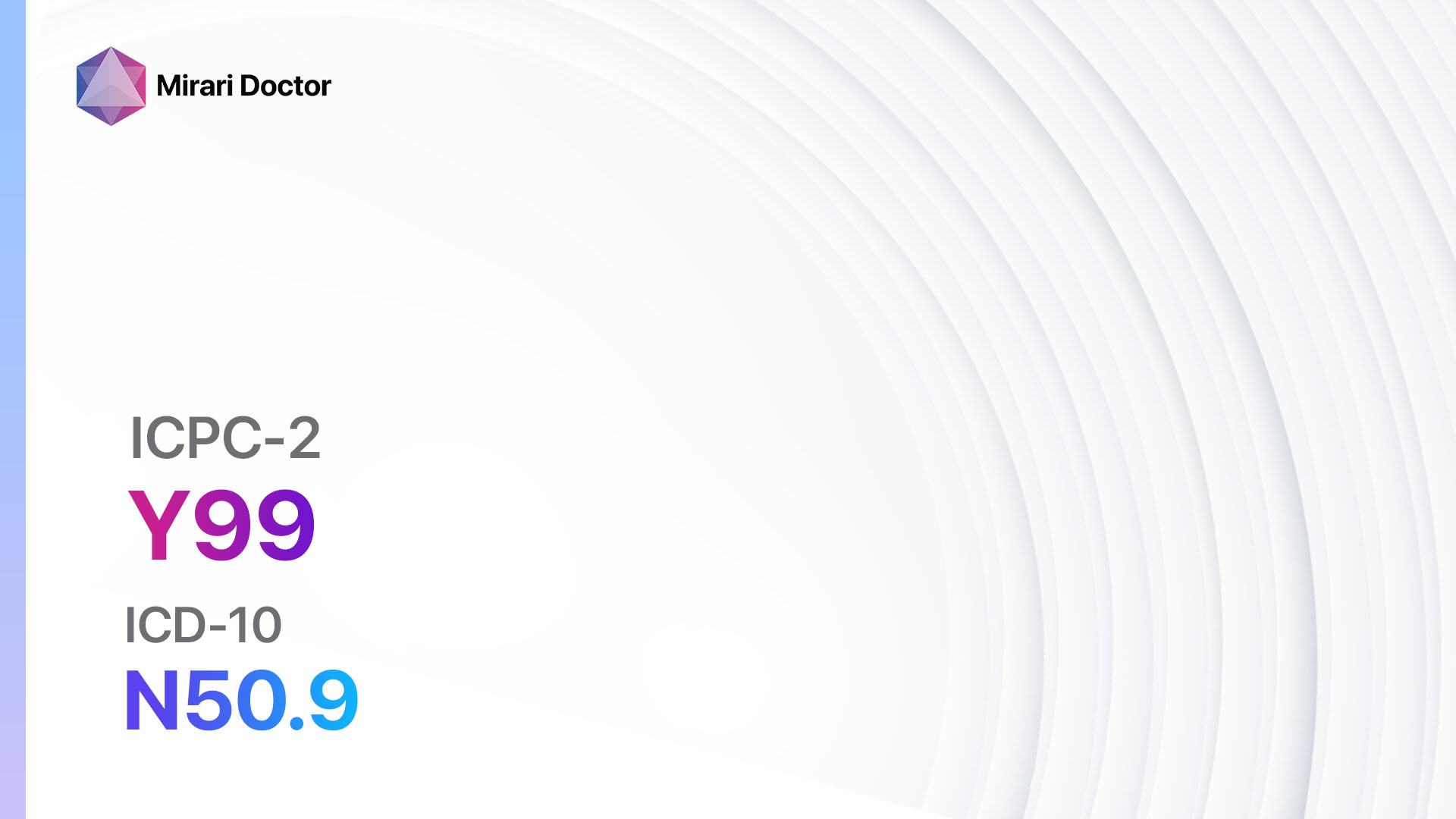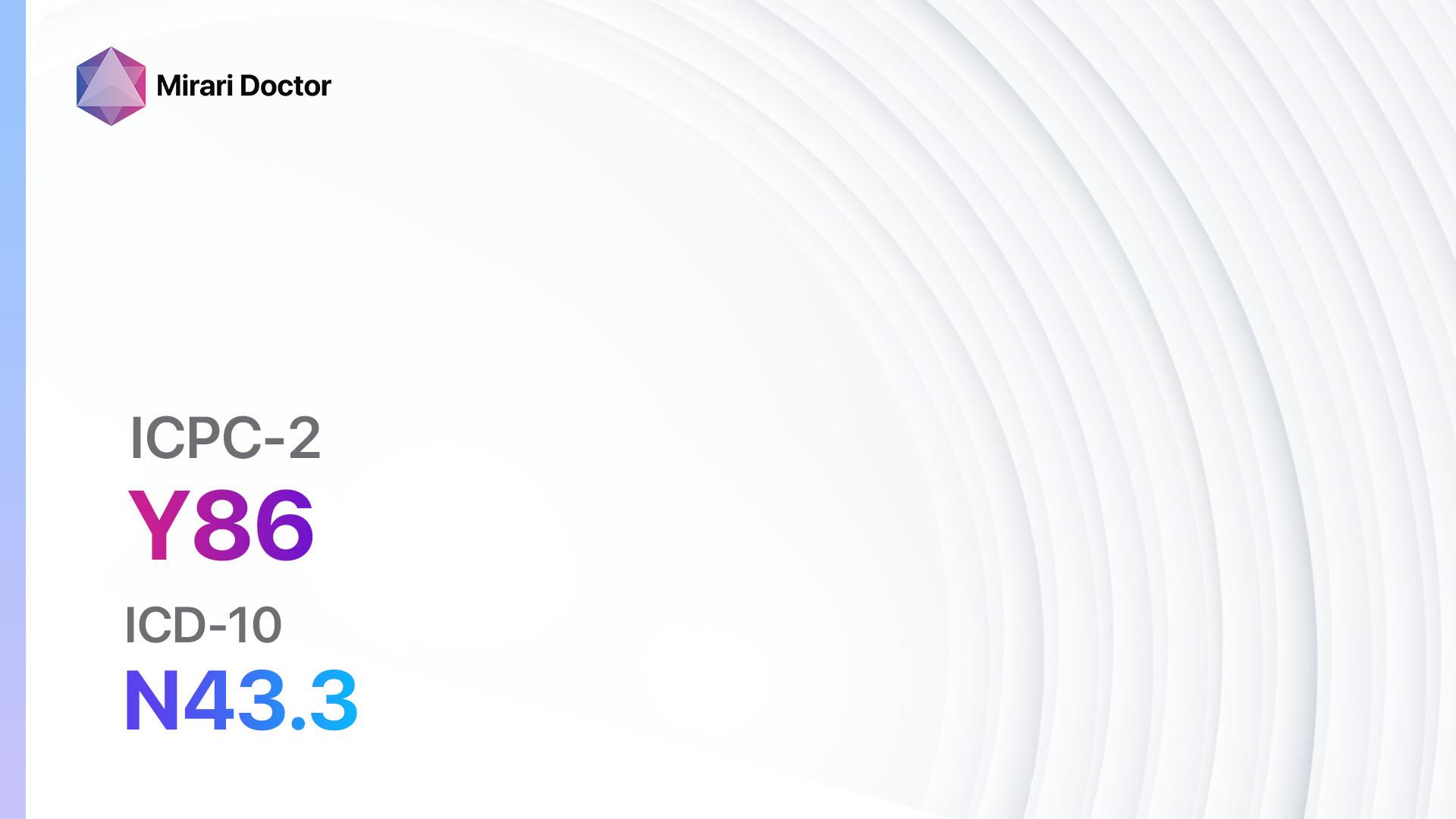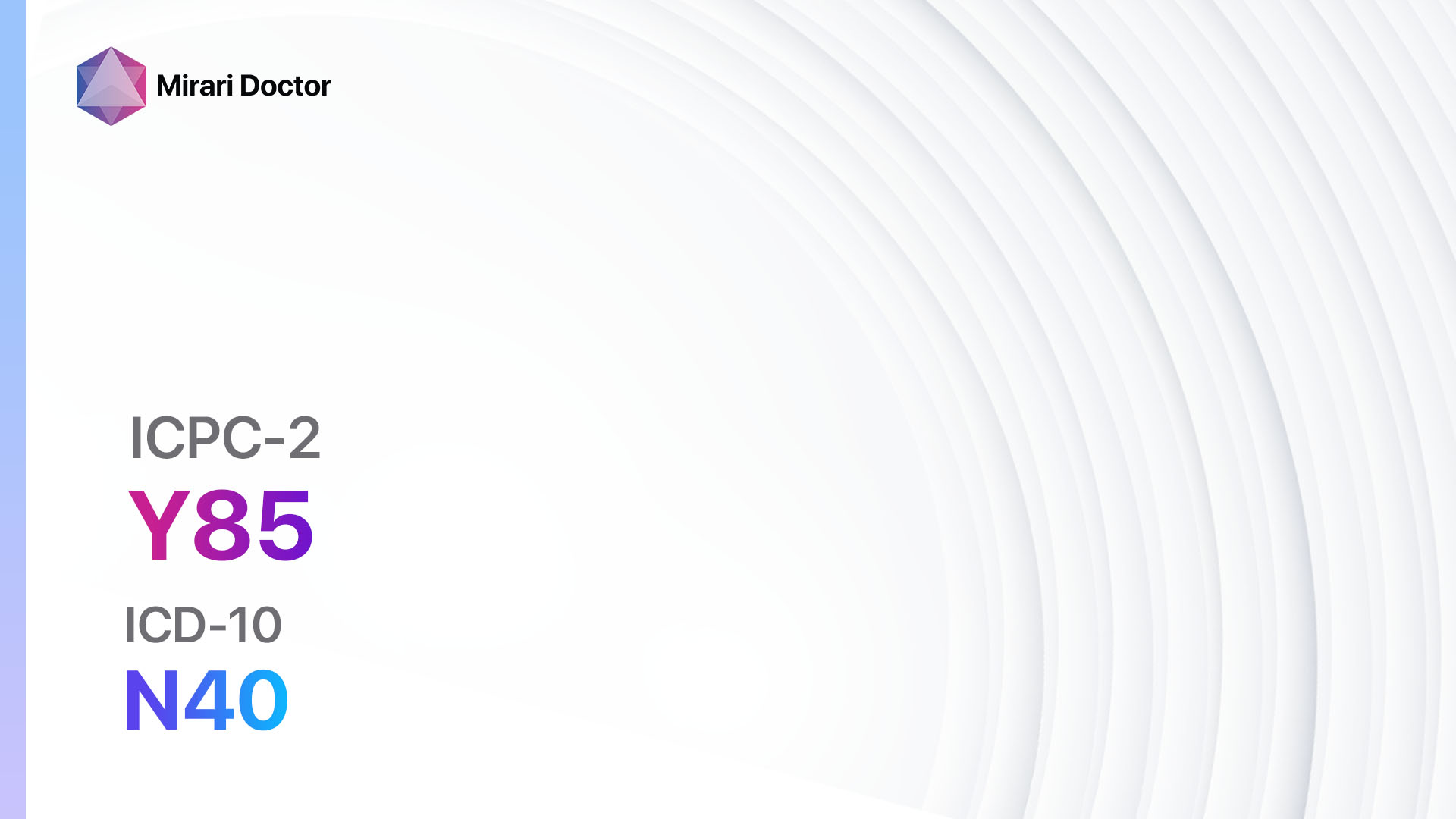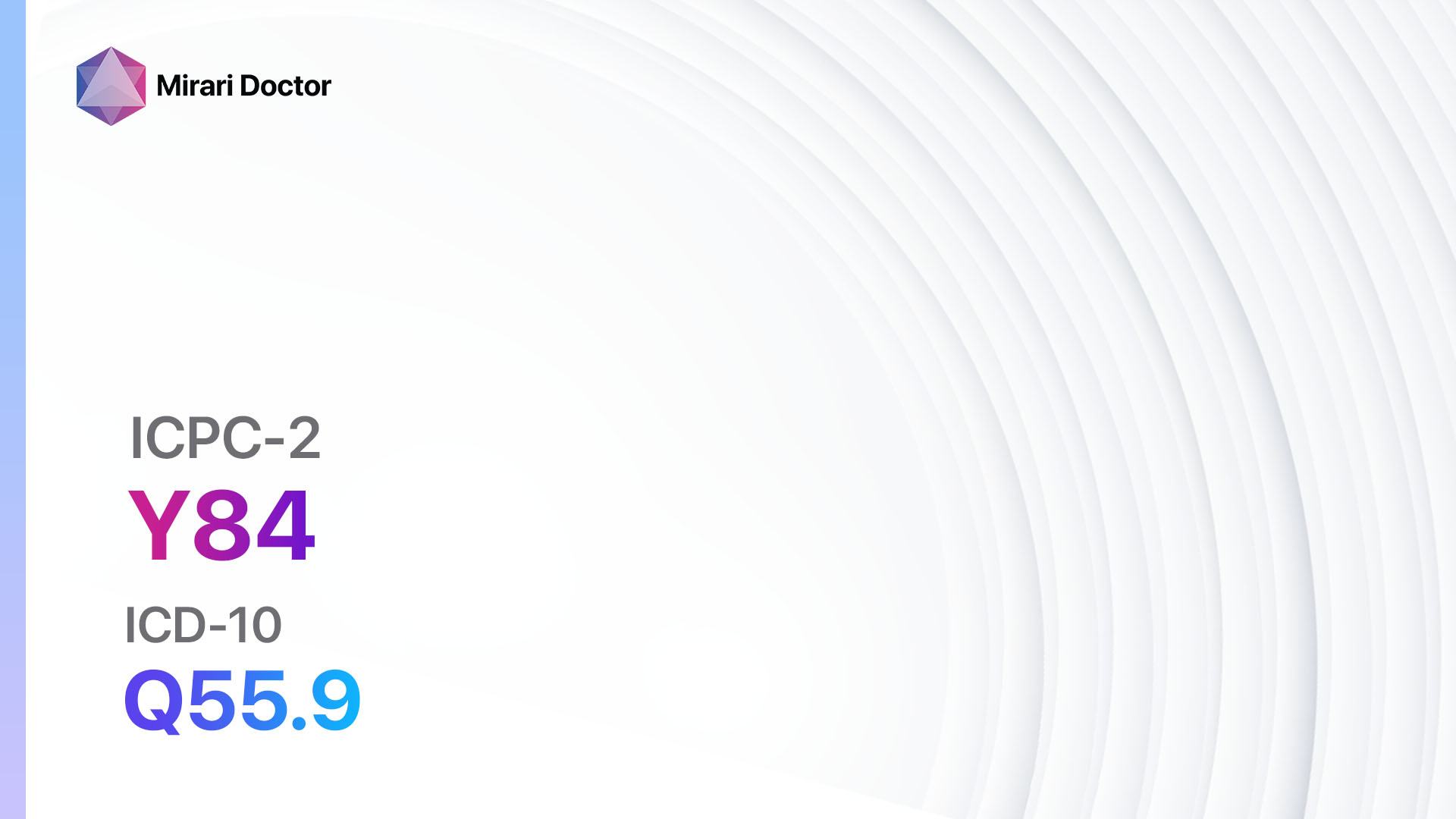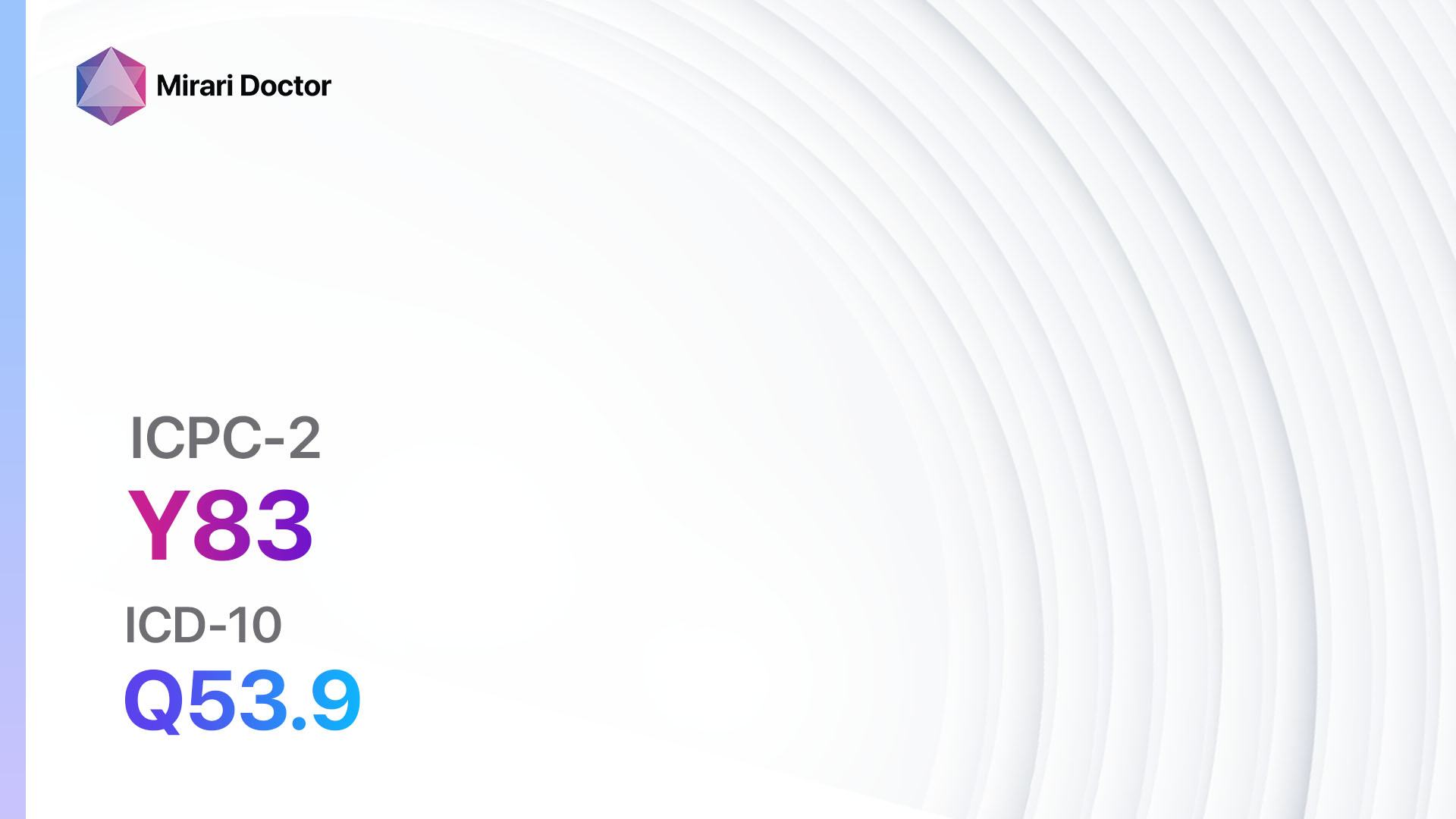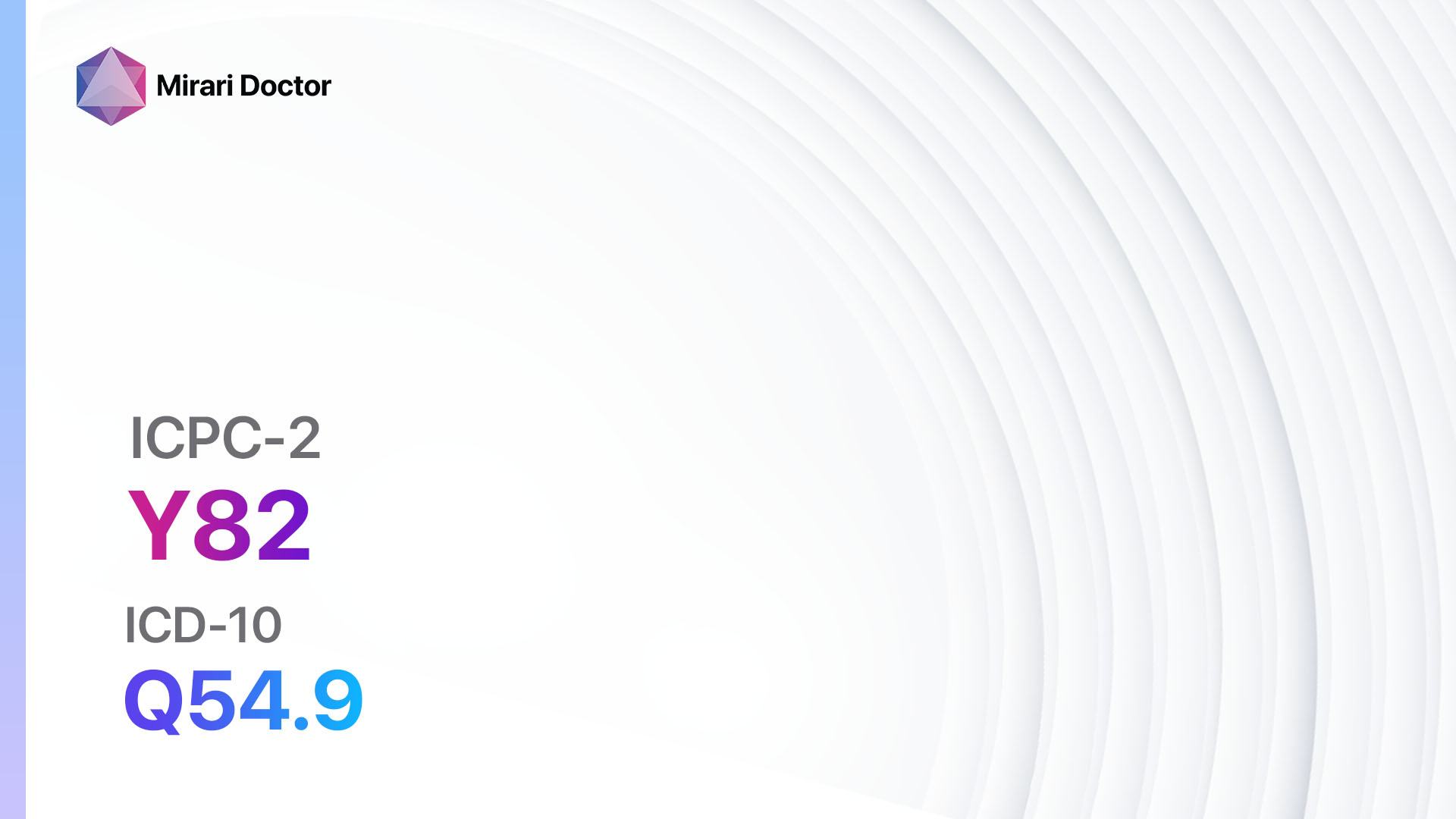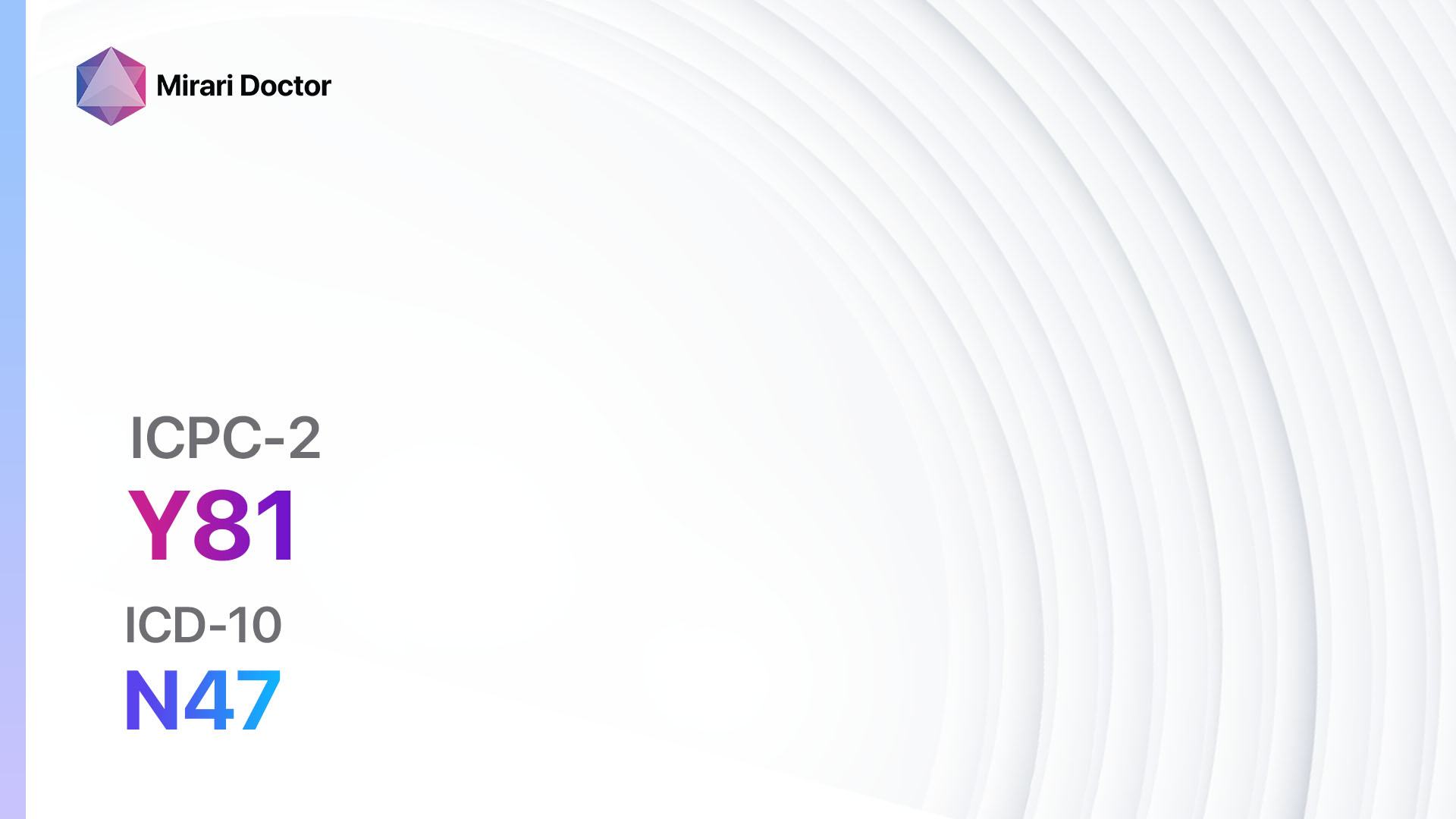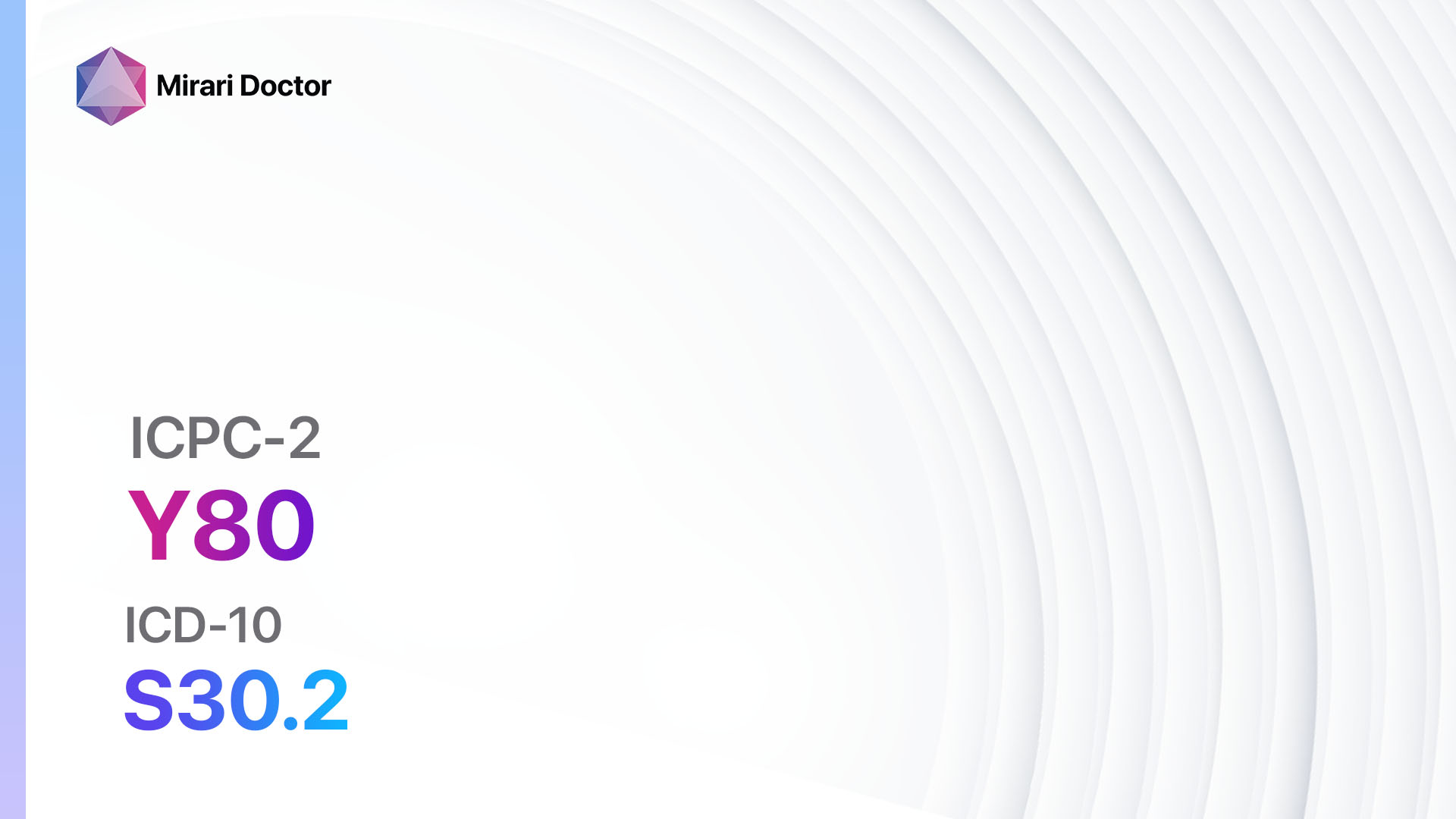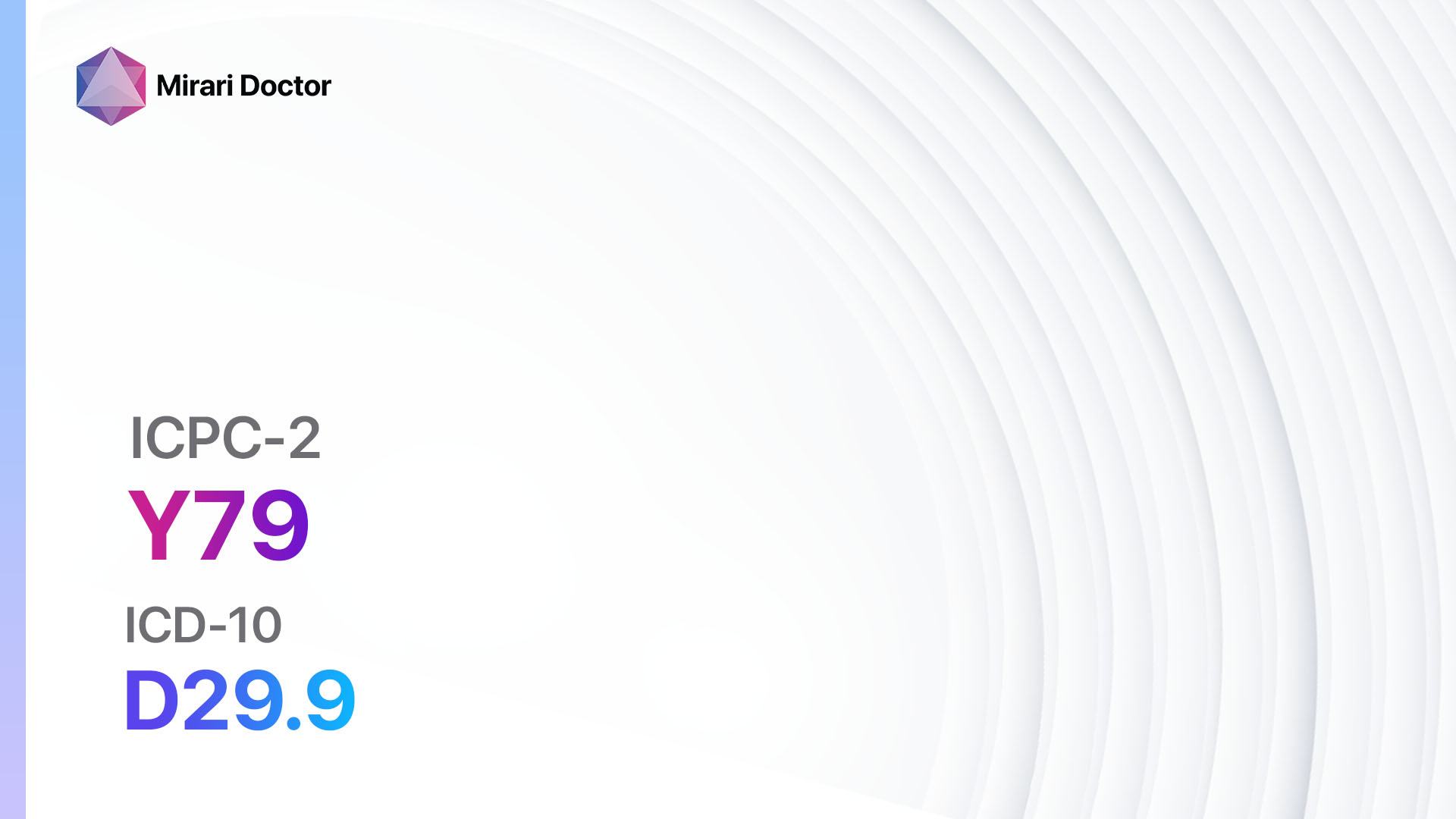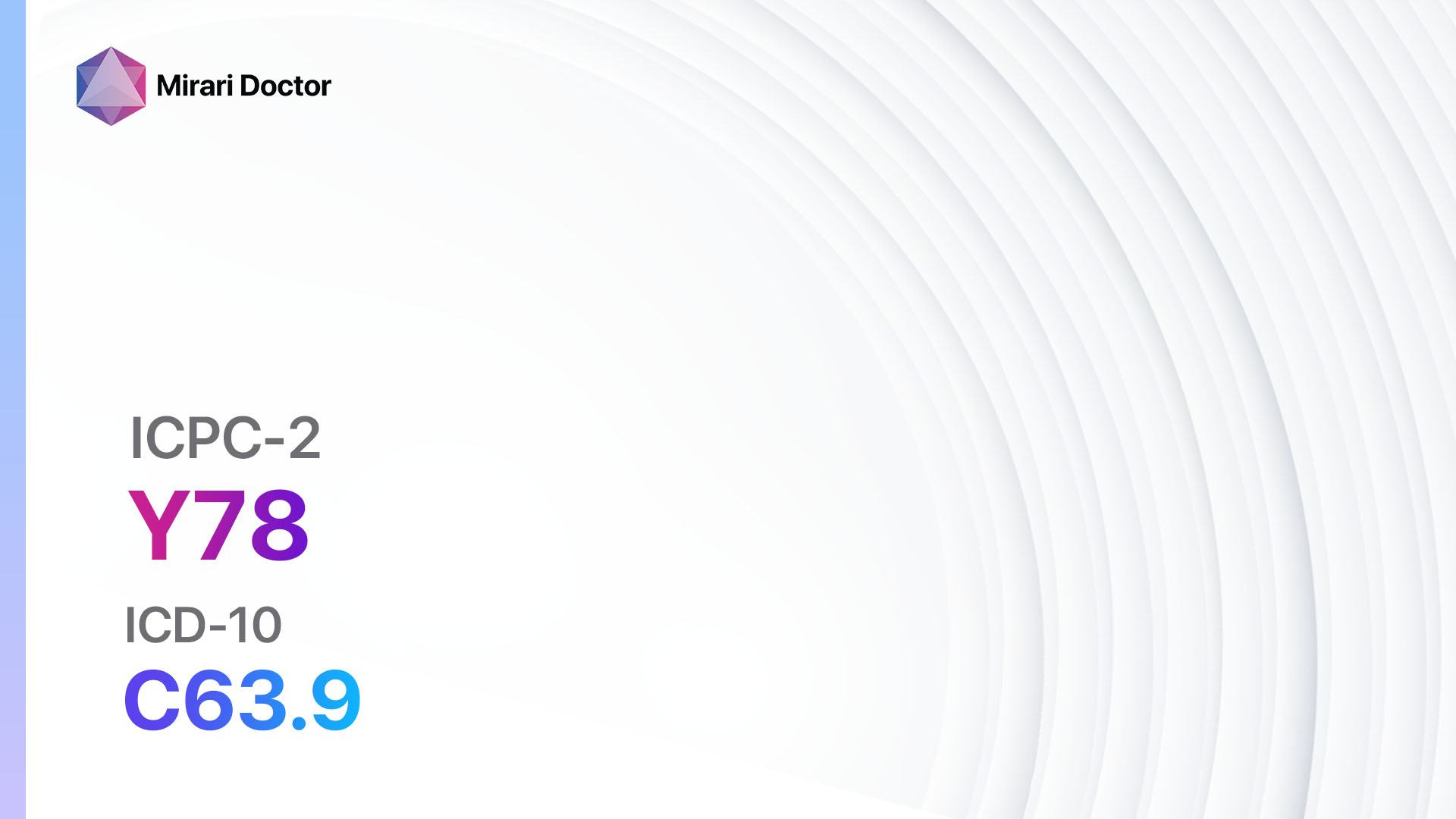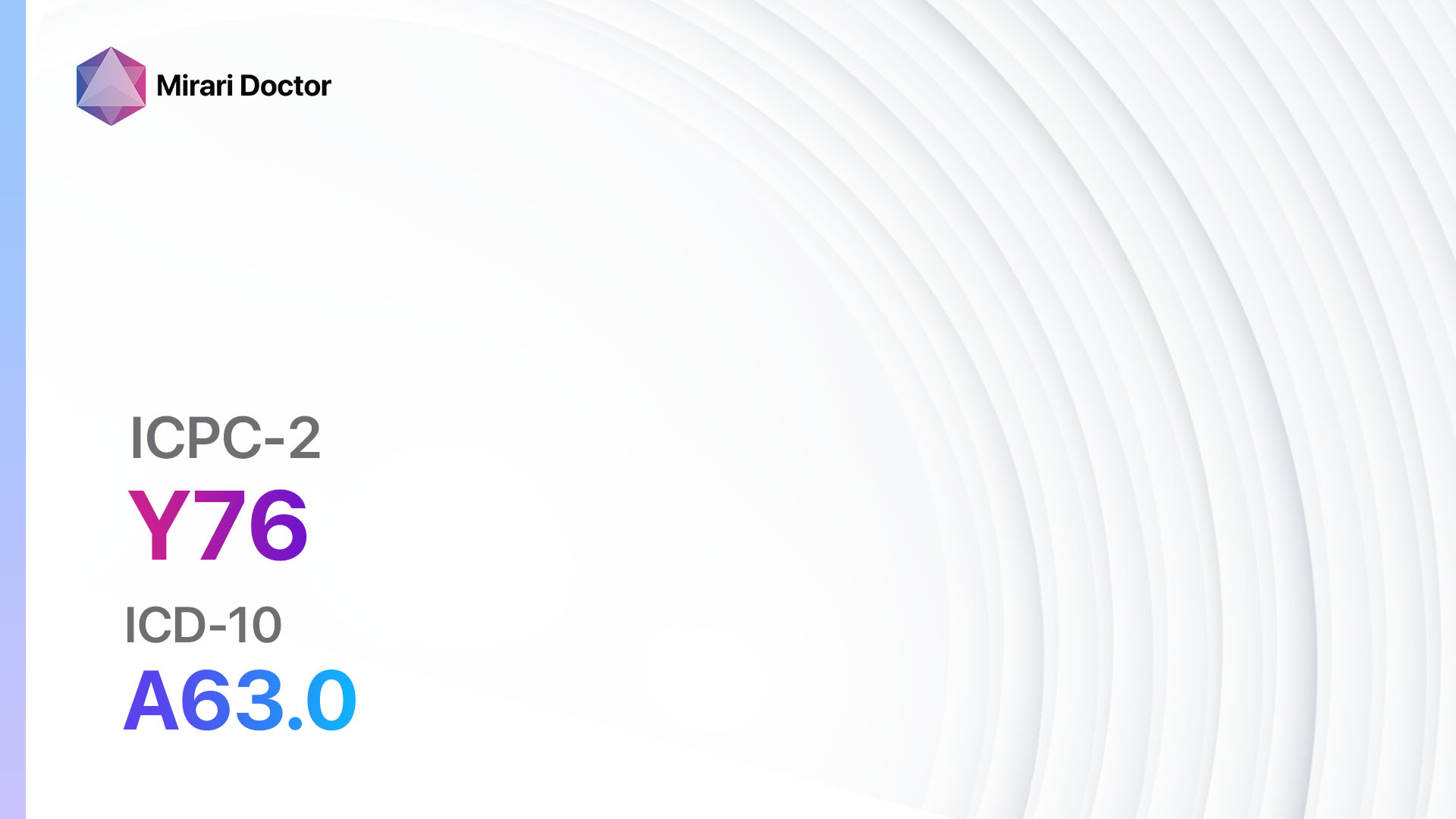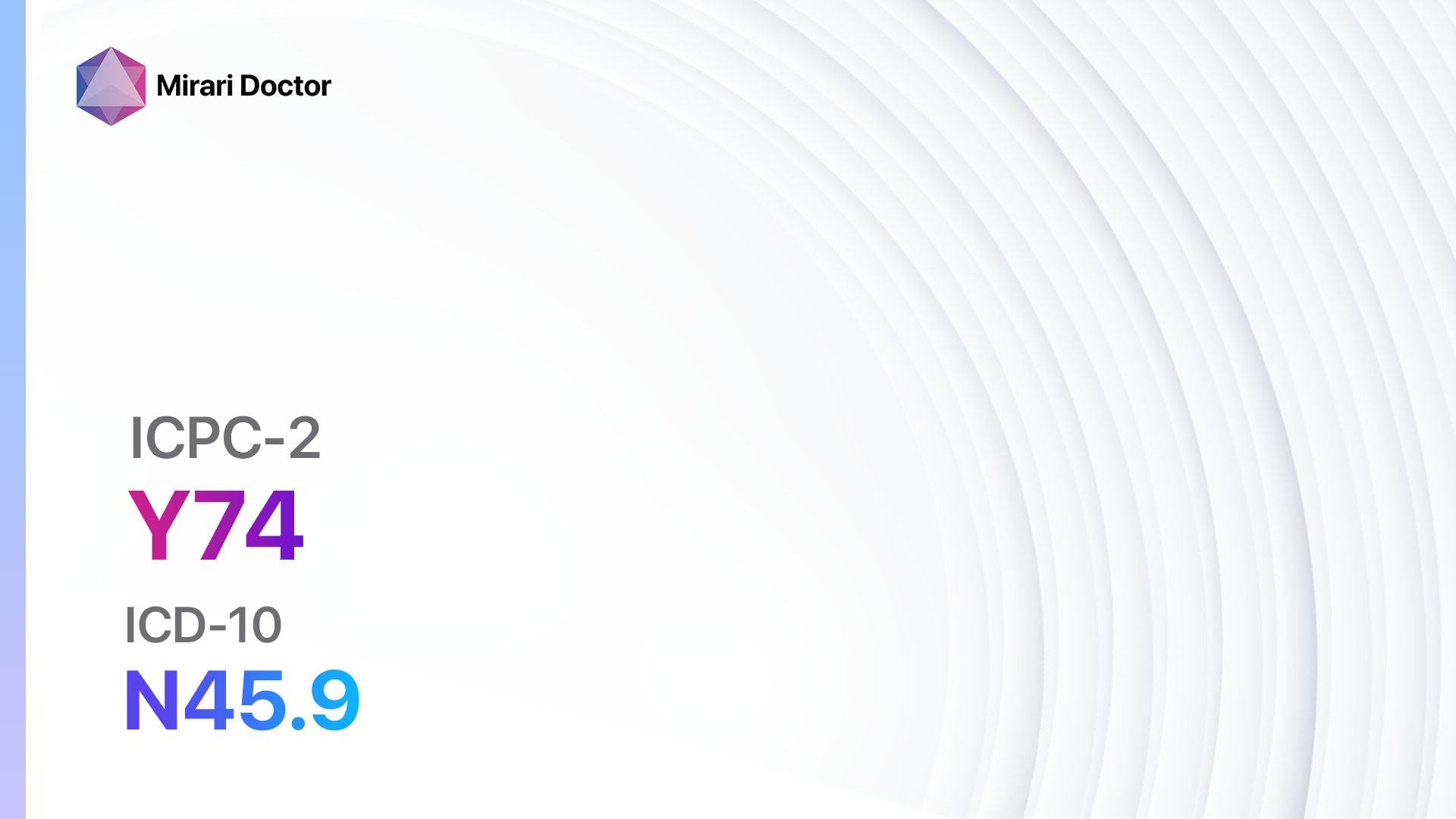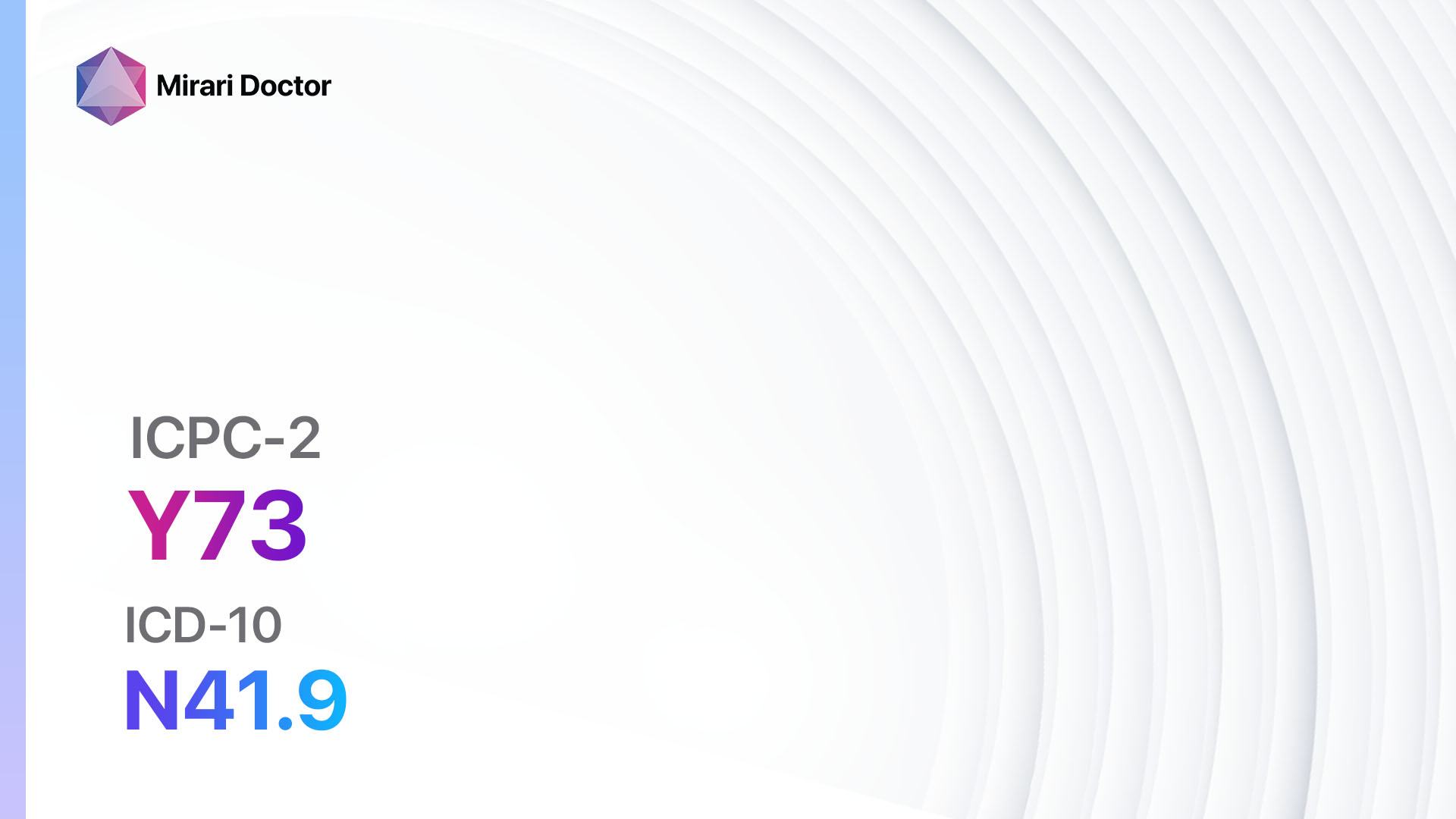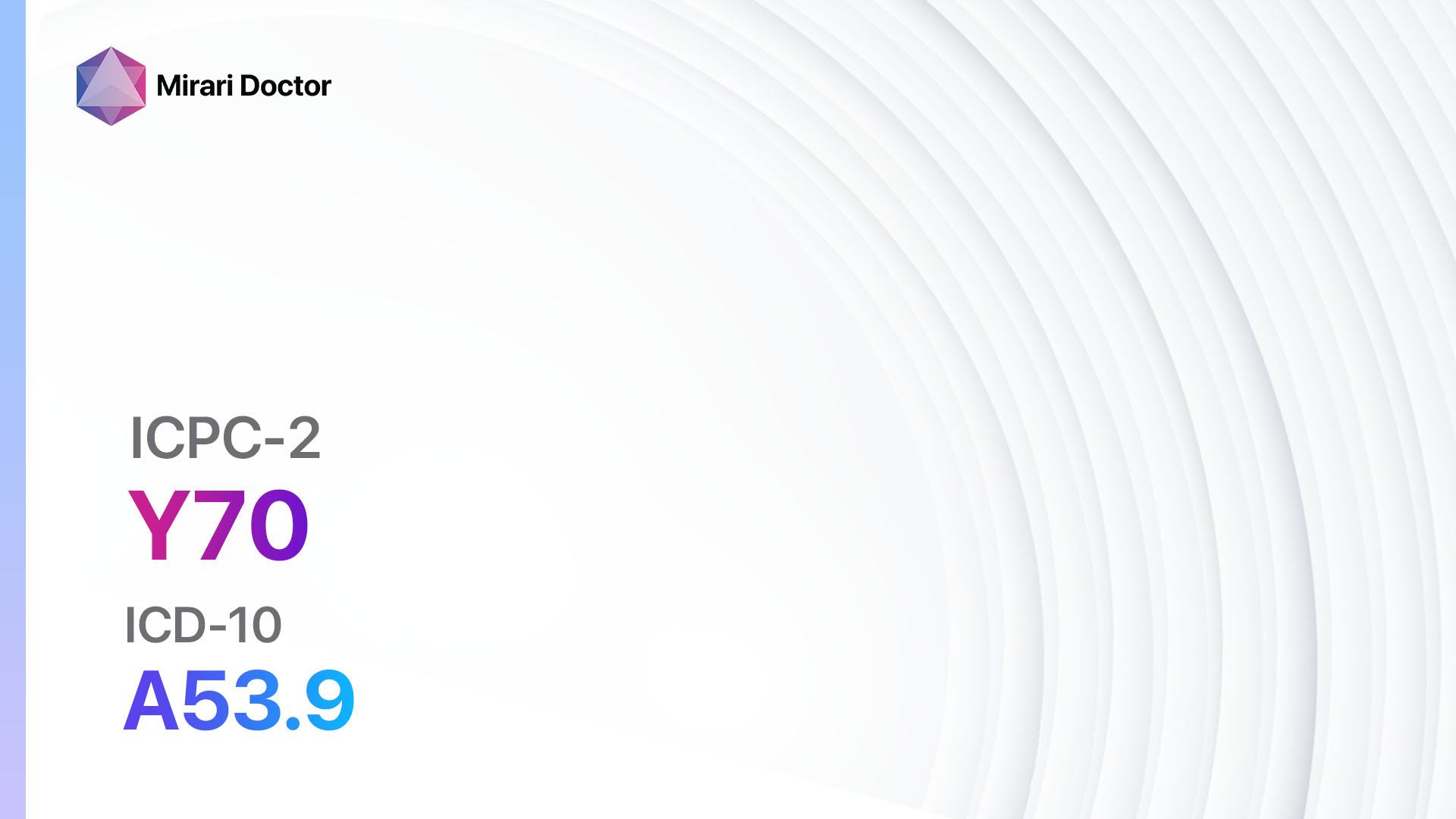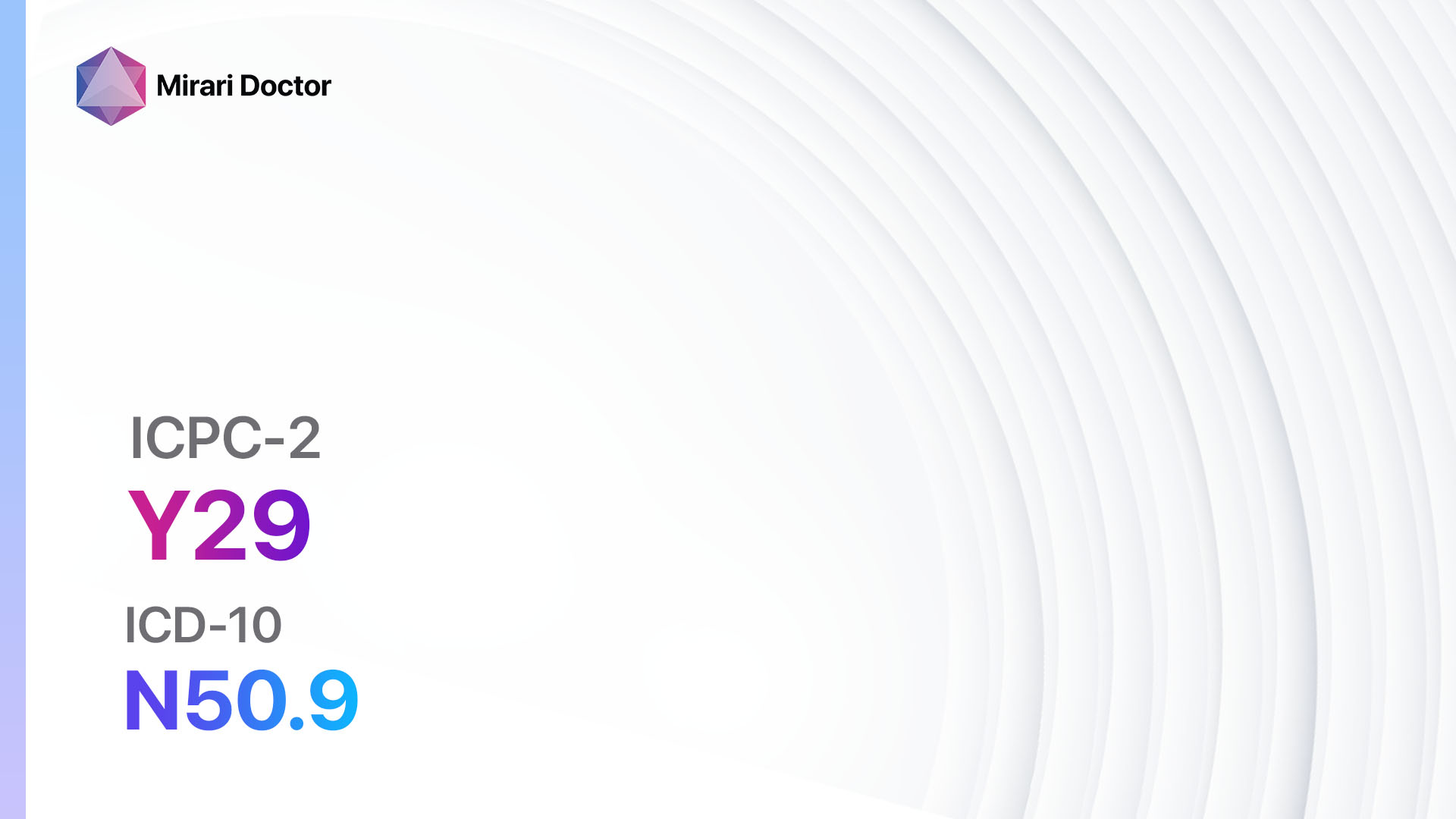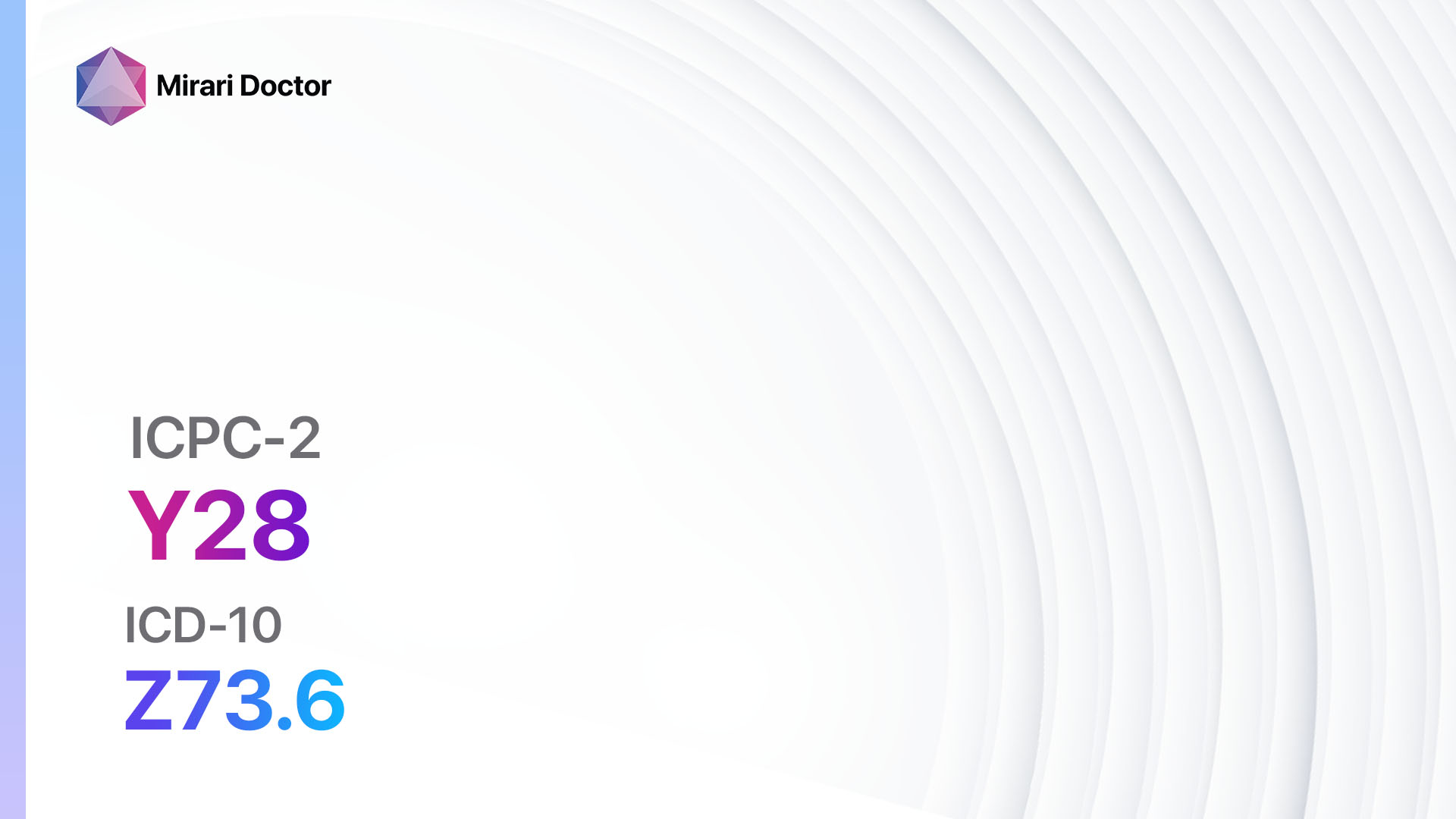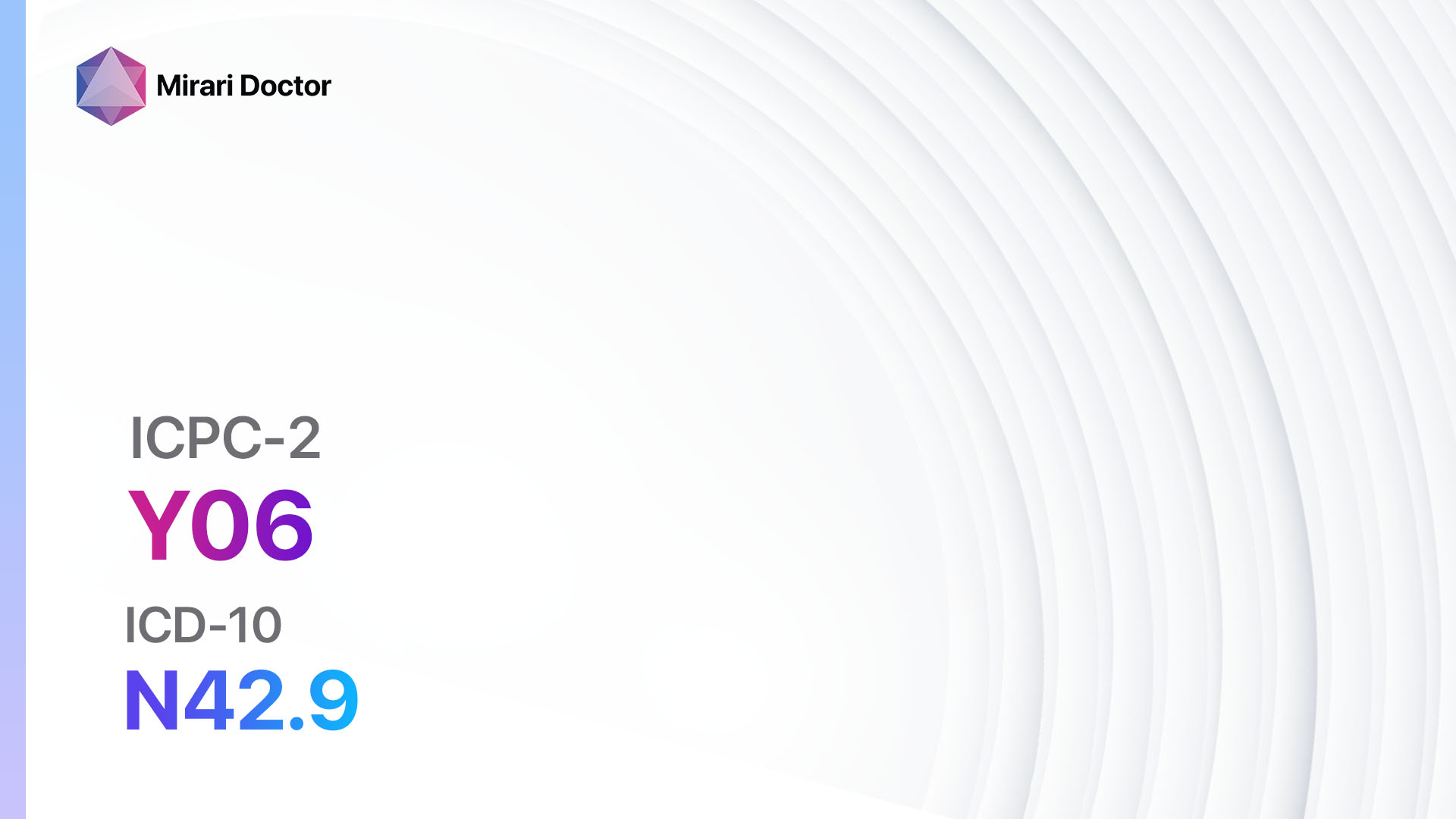
Introduction
Prostate symptoms/complaints can be indicative of various conditions affecting the prostate gland. These symptoms can range from mild discomfort to severe pain and can greatly impact a patient’s quality of life. The aim of this guide is to provide healthcare professionals with a comprehensive clinical procedural guide for the evaluation and management of patients presenting with prostate symptoms/complaints.
Codes
- ICPC-2 Code: Y06 Prostate symptom/complaint[1]
- ICD-10 Code: N42.9 Disorder of prostate, unspecified[2]
Symptoms
- Frequent urination: Patients may experience an increased need to urinate, especially at night.
- Difficulty starting or stopping urination: Patients may have trouble initiating urination or may experience a weak urine stream.
- Urinary urgency: Patients may feel a sudden and intense urge to urinate.
- Pain or discomfort during urination: Patients may experience pain, burning, or discomfort while urinating.
- Blood in the urine: Patients may notice blood in their urine, which can be a sign of various prostate conditions.
- Erectile dysfunction: Patients may have difficulty achieving or maintaining an erection.
- Pain or discomfort in the pelvic area: Patients may experience pain or discomfort in the lower abdomen, groin, or perineum.[3][4]
Causes
- Benign prostatic hyperplasia (BPH): Enlargement of the prostate gland, commonly affecting older men.
- Prostatitis: Inflammation or infection of the prostate gland.
- Prostate cancer: Malignant growth of cells in the prostate gland.
- Urinary tract infection: Infection in the urinary tract, which can cause symptoms similar to prostate conditions.
- Urethral stricture: Narrowing of the urethra, which can cause urinary symptoms.
- Bladder stones: Calculi formed in the bladder, which can cause urinary symptoms.[5]
Diagnostic Steps
Medical History
- Gather information regarding the patient’s symptoms, including the duration, severity, and any associated factors.
- Assess the patient’s medical history, including any previous prostate conditions or treatments.
- Evaluate the patient’s risk factors for prostate cancer, such as age, family history, and ethnicity.
- Inquire about any urinary symptoms, sexual dysfunction, or other relevant complaints.
- Determine the patient’s current medications and any history of drug allergies.[6]
Physical Examination
- Perform a digital rectal examination (DRE) to assess the size, shape, and consistency of the prostate gland.
- Palpate the inguinal lymph nodes to evaluate for any signs of lymphadenopathy.
- Assess the abdomen for any masses or tenderness.
- Evaluate the external genitalia for any abnormalities.
- Perform a neurological examination to assess for any signs of nerve damage.
- Measure the patient’s blood pressure and heart rate.[7]
Laboratory Tests
- Prostate-specific antigen (PSA) test: Measure the levels of PSA in the blood, which can help identify prostate conditions, including prostate cancer.
- Urinalysis: Assess the urine for the presence of blood, infection, or other abnormalities.
- Urine culture and sensitivity: Identify any bacterial infection in the urinary tract.
- Complete blood count (CBC): Evaluate for any signs of infection or other systemic abnormalities.
- Renal function tests: Assess the kidney function and rule out any underlying renal disease.
- Sexually transmitted infection (STI) testing: Perform STI testing if indicated based on the patient’s history or symptoms.[8][9]
Diagnostic Imaging
- Transrectal ultrasound (TRUS): Use ultrasound imaging to visualize the prostate gland and assess for any abnormalities, such as enlargement or tumors.
- Magnetic resonance imaging (MRI): Provide detailed images of the prostate gland, which can help in the diagnosis and staging of prostate cancer.
- Computed tomography (CT) scan: Evaluate the extent of any suspected prostate tumors and assess for metastasis.
- Bone scan: Assess for any bone metastasis in patients with suspected or confirmed prostate cancer.[10]
Other Tests
- Uroflowmetry: Measure the flow rate and volume of urine during voiding to assess for any obstruction or urinary flow abnormalities.
- Cystoscopy: Insert a thin, flexible tube with a camera into the urethra and bladder to visualize the urinary tract and assess for any structural abnormalities or tumors.
- Prostate biopsy: Collect tissue samples from the prostate gland for further evaluation under a microscope to diagnose or rule out prostate cancer.
Follow-up and Patient Education
- Schedule regular follow-up appointments to monitor the patient’s symptoms and response to treatment.
- Provide education to the patient regarding their condition, treatment options, and potential complications.
- Discuss lifestyle modifications that can help manage symptoms, such as avoiding caffeine and alcohol, practicing pelvic floor exercises, and maintaining a healthy diet.
Possible Interventions
Traditional Interventions
Medications:
Top 5 drugs for prostate symptoms/complaints:
- Alpha-blockers (e.g., Tamsulosin, Terazosin):
- Cost: Generic versions can be $10-$50/month.
- Contraindications: Hypersensitivity to alpha-blockers.
- Side effects: Dizziness, low blood pressure, retrograde ejaculation.
- Severe side effects: Priapism, allergic reactions.
- Drug interactions: Other blood pressure-lowering medications.
- Warning: Orthostatic hypotension may occur.
- 5-alpha reductase inhibitors (e.g., Finasteride, Dutasteride):
- Cost: Generic versions can be $10-$50/month.
- Contraindications: Hypersensitivity to 5-alpha reductase inhibitors.
- Side effects: Decreased libido, erectile dysfunction, gynecomastia.
- Severe side effects: Allergic reactions, breast cancer.
- Drug interactions: None reported.
- Warning: Women of childbearing potential should avoid handling crushed or broken tablets.
- Antibiotics (e.g., Ciprofloxacin, Trimethoprim/sulfamethoxazole):
- Cost: Generic versions can be $3-$30/month.
- Contraindications: Hypersensitivity to antibiotics.
- Side effects: Nausea, diarrhea, allergic reactions.
- Severe side effects: Tendon rupture, severe skin reactions.
- Drug interactions: Other medications that affect liver enzymes.
- Warning: Overuse of antibiotics can lead to antibiotic resistance.
- Nonsteroidal anti-inflammatory drugs (NSAIDs) (e.g., Ibuprofen, Naproxen):
- Cost: Generic versions can be $3-$20/month.
- Contraindications: History of NSAID allergy or gastrointestinal bleeding.
- Side effects: Upset stomach, heartburn, increased risk of bleeding.
- Severe side effects: Gastrointestinal bleeding, kidney problems.
- Drug interactions: Other medications that increase the risk of bleeding.
- Warning: Long-term use of NSAIDs can increase the risk of cardiovascular events.
- Phosphodiesterase-5 inhibitors (e.g., Sildenafil, Tadalafil):
- Cost: Generic versions can be $10-$50/pill.
- Contraindications: Concurrent use of nitrates or riociguat.
- Side effects: Headache, flushing, indigestion.
- Severe side effects: Vision or hearing loss, priapism.
- Drug interactions: Other medications for erectile dysfunction.
- Warning: Use with caution in patients with cardiovascular disease.
Alternative Drugs:
- Herbal supplements (e.g., Saw Palmetto, Pygeum): May have potential benefits in relieving prostate symptoms. Cost: Varies depending on the specific supplement.
- Phytotherapy (e.g., Serenoa repens, Urtica dioica): Plant-based therapies that may help alleviate symptoms. Cost: Varies depending on the specific therapy.
- Homeopathic remedies (e.g., Sabal serrulata, Conium maculatum): May be used as an alternative approach. Cost: Varies depending on the specific remedy.
Surgical Interventions:
- Transurethral resection of the prostate (TURP): Remove excess prostate tissue using a surgical instrument inserted through the urethra. Cost: $10,000 to $15,000.
- Transurethral incision of the prostate (TUIP): Make small incisions in the prostate to relieve urinary symptoms. Cost: $8,000 to $12,000.
- Laser surgery: Use laser energy to remove or destroy prostate tissue. Cost: $10,000 to $15,000.
- Prostatectomy: Remove the entire prostate gland. Cost: $15,000 to $30,000.
- Prostatic artery embolization: Block the blood supply to the prostate to shrink it. Cost: $10,000 to $15,000.
Alternative Interventions
- Acupuncture: May help relieve prostate symptoms and improve overall well-being. Cost: $60-$120 per session.
- Herbal supplements: Some herbs, such as Saw Palmetto and Pygeum, are believed to have potential benefits for prostate health. Cost: Varies depending on the specific supplement.
- Nutritional supplements: Certain vitamins and minerals, such as vitamin D and zinc, may support prostate health. Cost: Varies depending on the specific supplement.
- Prostate massage: Manual stimulation of the prostate to promote prostate health and relieve symptoms. Cost: Varies depending on the practitioner.
- Pelvic floor exercises: Strengthening the pelvic floor muscles can help improve bladder control and alleviate symptoms. Cost: Free.
Lifestyle Interventions
- Dietary modifications: Encourage a balanced diet rich in fruits, vegetables, whole grains, and lean proteins. Limit the consumption of processed foods, caffeine, and alcohol. Cost: Varies depending on dietary choices.
- Regular exercise: Engaging in regular physical activity can help improve overall health and alleviate prostate symptoms. Cost: Varies depending on exercise preferences.
- Stress management: Encourage stress-reduction techniques, such as meditation, yoga, or deep breathing exercises. Cost: Varies depending on the chosen method.
- Smoking cessation: Advise patients to quit smoking, as smoking can worsen prostate symptoms. Cost: Varies depending on the chosen smoking cessation method.
- Weight management: Maintain a healthy weight through proper diet and exercise, as obesity can contribute to prostate symptoms. Cost: Varies depending on dietary choices and exercise preferences.
It is important to note that the cost ranges provided are approximate and may vary depending on the location and availability of the interventions. Patients should consult with a healthcare professional for a more accurate cost assessment and to determine the most suitable interventions for their specific condition.
Mirari Cold Plasma Alternative Intervention
Understanding Mirari Cold Plasma
- Safe and Non-Invasive Treatment: Mirari Cold Plasma is a safe and non-invasive treatment option for various skin conditions. It does not require incisions, minimizing the risk of scarring, bleeding, or tissue damage.
- Efficient Extraction of Foreign Bodies: Mirari Cold Plasma facilitates the removal of foreign bodies from the skin by degrading and dissociating organic matter, allowing easier access and extraction.
- Pain Reduction and Comfort: Mirari Cold Plasma has a local analgesic effect, providing pain relief during the treatment, making it more comfortable for the patient.
- Reduced Risk of Infection: Mirari Cold Plasma has antimicrobial properties, effectively killing bacteria and reducing the risk of infection.
- Accelerated Healing and Minimal Scarring: Mirari Cold Plasma stimulates wound healing and tissue regeneration, reducing healing time and minimizing the formation of scars.
Mirari Cold Plasma Prescription
Video instructions for using Mirari Cold Plasma Device – Y06 Prostate symptom/complaint (ICD-10:N42.9)
| Mild | Moderate | Severe |
| Mode setting: 1 (Infection) Location: 0 (Localized) Morning: 15 minutes, Evening: 15 minutes |
Mode setting: 1 (Infection) Location: 0 (Localized) Morning: 30 minutes, Lunch: 30 minutes, Evening: 30 minutes |
Mode setting: 1 (Infection) Location: 0 (Localized) Morning: 30 minutes, Lunch: 30 minutes, Evening: 30 minutes |
| Mode setting: 2 (Wound Healing) Location: 0 (Localized) Morning: 15 minutes, Evening: 15 minutes |
Mode setting: 2 (Wound Healing) Location: 0 (Localized) Morning: 30 minutes, Lunch: 30 minutes, Evening: 30 minutes |
Mode setting: 2 (Wound Healing) Location: 0 (Localized) Morning: 30 minutes, Lunch: 30 minutes, Evening: 30 minutes |
| Mode setting: 5 (Prostatitis Therapy) Location: 2 (Prostate & Uterus) Morning: 15 minutes, Evening: 15 minutes |
Mode setting: 5 (Prostatitis Therapy) Location: 2 (Prostate & Uterus) Morning: 30 minutes, Lunch: 30 minutes, Evening: 30 minutes |
Mode setting: 5 (Prostatitis Therapy) Location: 2 (Prostate & Uterus) Morning: 30 minutes, Lunch: 30 minutes, Evening: 30 minutes |
| Mode setting: 7 (Immunotherapy) Location: 1 (Sacrum) Morning: 15 minutes, Evening: 15 minutes |
Mode setting: 7 (Immunotherapy) Location: 1 (Sacrum) Morning: 30 minutes, Lunch: 30 minutes, Evening: 30 minutes |
Mode setting: 7 (Immunotherapy) Location: 1 (Sacrum) Morning: 30 minutes, Lunch: 30 minutes, Evening: 30 minutes |
| Total Morning: 60 minutes approx. $10 USD, Evening: 60 minutes approx. $10 USD |
Total Morning: 120 minutes approx. $20 USD, Lunch: 120 minutes approx. $20 USD, Evening: 120 minutes approx. $20 USD, |
Total Morning: 120 minutes approx. $20 USD, Lunch: 120 minutes approx. $20 USD, Evening: 120 minutes approx. $20 USD, |
| Usual treatment for 7-60 days approx. $140 USD – $1200 USD | Usual treatment for 6-8 weeks approx. $2,520 USD – $3,360 USD |
Usual treatment for 3-6 months approx. $5,400 USD – $10,800 USD
|
 |
|
Use the Mirari Cold Plasma device to treat Prostate symptom/complaint effectively.
WARNING: MIRARI COLD PLASMA IS DESIGNED FOR THE HUMAN BODY WITHOUT ANY ARTIFICIAL OR THIRD PARTY PRODUCTS. USE OF OTHER PRODUCTS IN COMBINATION WITH MIRARI COLD PLASMA MAY CAUSE UNPREDICTABLE EFFECTS, HARM OR INJURY. PLEASE CONSULT A MEDICAL PROFESSIONAL BEFORE COMBINING ANY OTHER PRODUCTS WITH USE OF MIRARI.
Step 1: Cleanse the Skin
- Start by cleaning the affected area of the skin with a gentle cleanser or mild soap and water. Gently pat the area dry with a clean towel.
Step 2: Prepare the Mirari Cold Plasma device
- Ensure that the Mirari Cold Plasma device is fully charged or has fresh batteries as per the manufacturer’s instructions. Make sure the device is clean and in good working condition.
- Switch on the Mirari device using the power button or by following the specific instructions provided with the device.
- Some Mirari devices may have adjustable settings for intensity or treatment duration. Follow the manufacturer’s instructions to select the appropriate settings based on your needs and the recommended guidelines.
Step 3: Apply the Device
- Place the Mirari device in direct contact with the affected area of the skin. Gently glide or hold the device over the skin surface, ensuring even coverage of the area experiencing.
- Slowly move the Mirari device in a circular motion or follow a specific pattern as indicated in the user manual. This helps ensure thorough treatment coverage.
Step 4: Monitor and Assess:
- Keep track of your progress and evaluate the effectiveness of the Mirari device in managing your Prostate symptom/complaint. If you have any concerns or notice any adverse reactions, consult with your health care professional.
Note
This guide is for informational purposes only and should not replace the advice of a medical professional. Always consult with your healthcare provider or a qualified medical professional for personal advice, diagnosis, or treatment. Do not solely rely on the information presented here for decisions about your health. Use of this information is at your own risk. The authors of this guide, nor any associated entities or platforms, are not responsible for any potential adverse effects or outcomes based on the content.
Mirari Cold Plasma System Disclaimer
- Purpose: The Mirari Cold Plasma System is a Class 2 medical device designed for use by trained healthcare professionals. It is registered for use in Thailand and Vietnam. It is not intended for use outside of these locations.
- Informational Use: The content and information provided with the device are for educational and informational purposes only. They are not a substitute for professional medical advice or care.
- Variable Outcomes: While the device is approved for specific uses, individual outcomes can differ. We do not assert or guarantee specific medical outcomes.
- Consultation: Prior to utilizing the device or making decisions based on its content, it is essential to consult with a Certified Mirari Tele-Therapist and your medical healthcare provider regarding specific protocols.
- Liability: By using this device, users are acknowledging and accepting all potential risks. Neither the manufacturer nor the distributor will be held accountable for any adverse reactions, injuries, or damages stemming from its use.
- Geographical Availability: This device has received approval for designated purposes by the Thai and Vietnam FDA. As of now, outside of Thailand and Vietnam, the Mirari Cold Plasma System is not available for purchase or use.
References
- World Organization of Family Doctors (WONCA). International Classification of Primary Care, Second edition (ICPC-2). Oxford University Press, 1998.
- World Health Organization. International Statistical Classification of Diseases and Related Health Problems, 10th Revision (ICD-10). Geneva: WHO, 2019.
- Nickel JC. Prostatitis. Can Urol Assoc J. 2011;5(5):306-315.
- Wein AJ, Kavoussi LR, Partin AW, Peters CA. Campbell-Walsh Urology. 11th ed. Philadelphia, PA: Elsevier; 2016.
- McVary KT, Roehrborn CG, Avins AL, et al. Update on AUA guideline on the management of benign prostatic hyperplasia. J Urol. 2011;185(5):1793-1803.
- Hatzimouratidis K, Giuliano F, Moncada I, et al. EAU guidelines on erectile dysfunction, premature ejaculation, penile curvature and priapism. Eur Urol. 2016;70(2):e1-e17.
- Bhasin S, Cunningham GR, Hayes FJ, et al. Testosterone therapy in men with androgen deficiency syndromes: an Endocrine Society clinical practice guideline. J Clin Endocrinol Metab. 2010;95(6):2536-2559.
- Burnett AL, Nehra A, Breau RH, et al. Erectile Dysfunction: AUA Guideline. J Urol. 2018;200(3):633-641.
- Cokkinos DD, Antypa E, Tserotas P, et al. Emergency ultrasound of the scrotum: A review of the commonest pathologic conditions. Curr Probl Diagn Radiol. 2011;40(1):1-14.
- Tsili AC, Argyropoulou MI, Giannakis D, et al. MRI in the characterization and local staging of testicular neoplasms. AJR Am J Roentgenol. 2010;194(3):682-689.
Related articles
Made in USA


